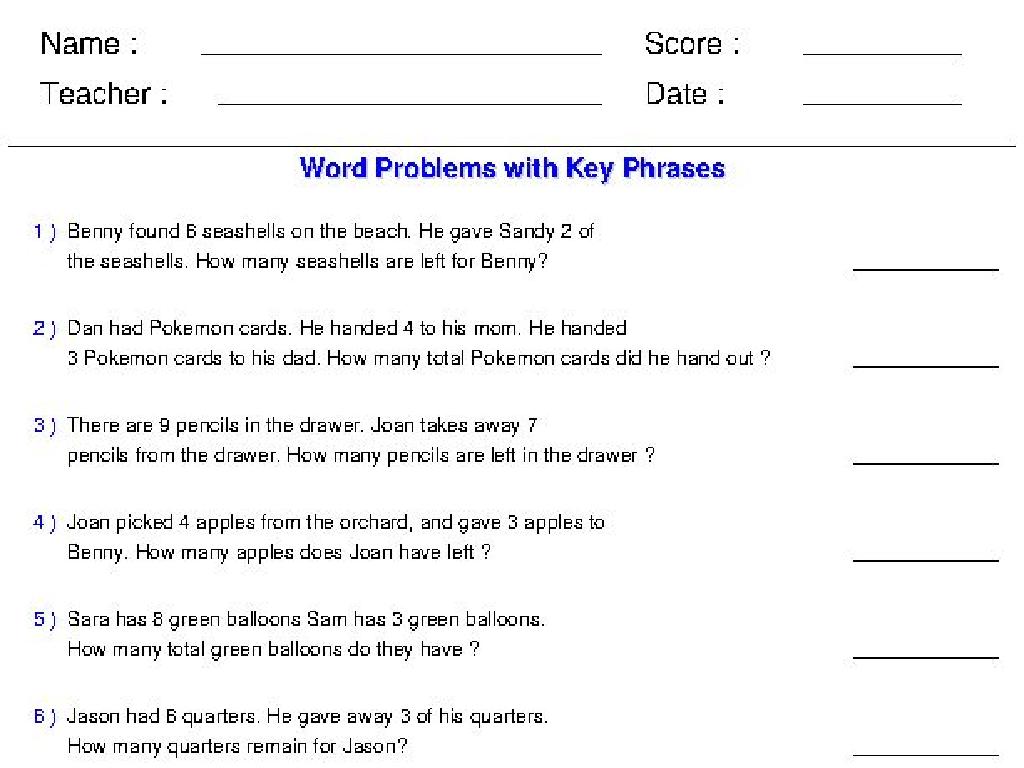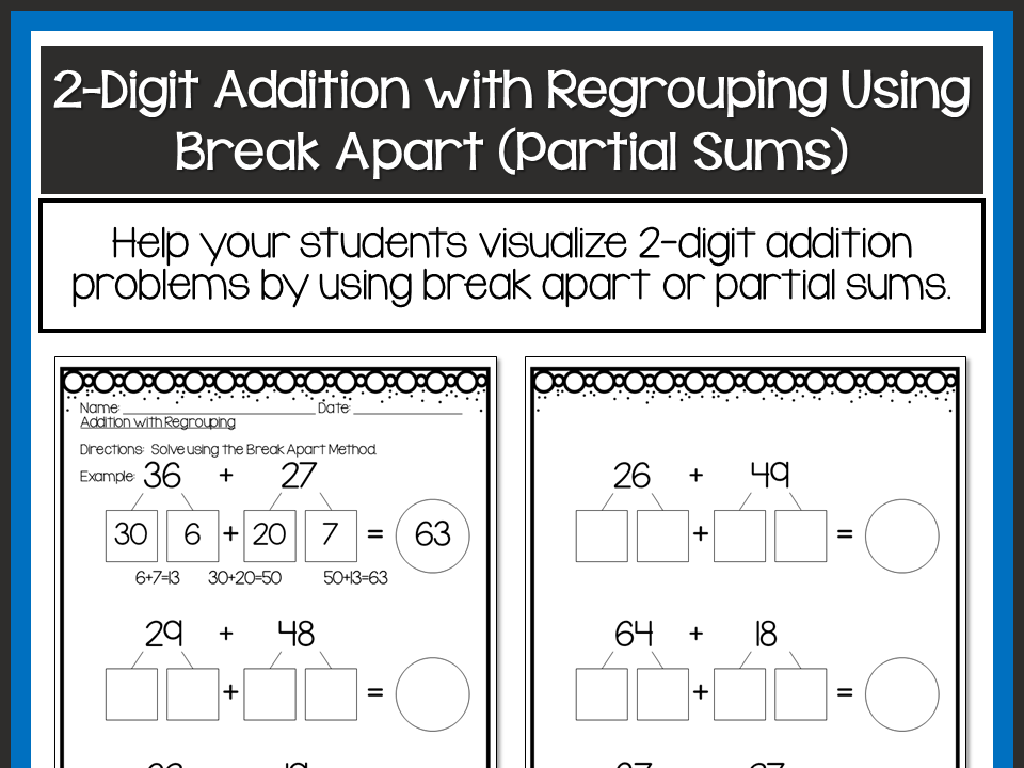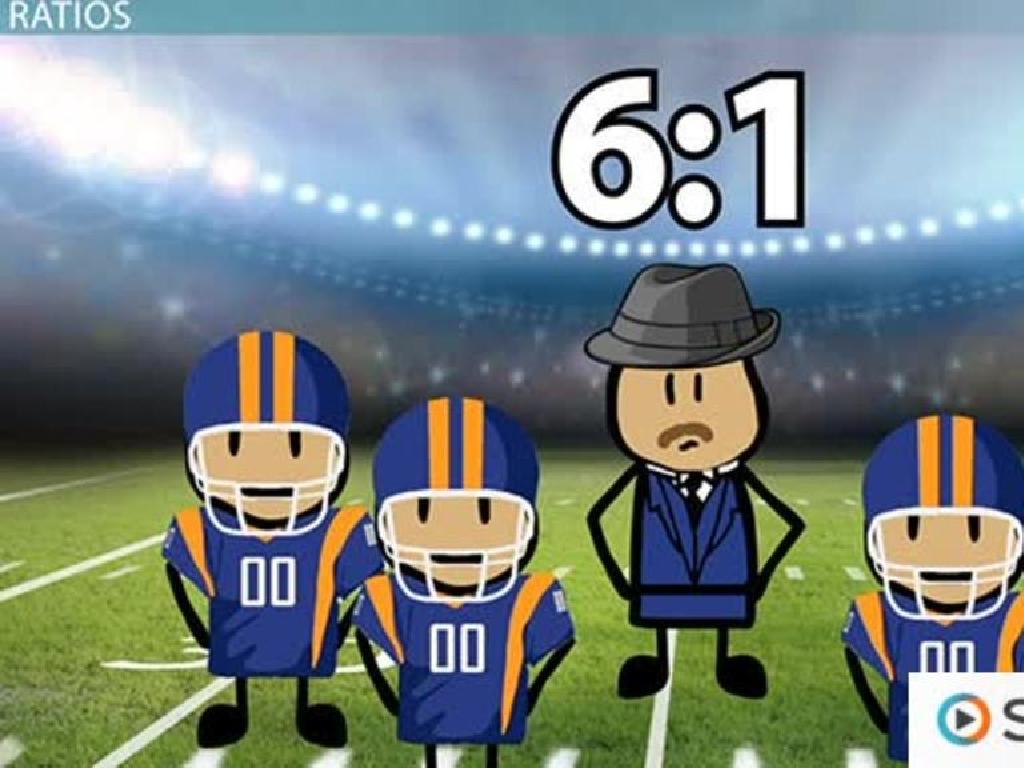Complete The Silent E Words
Subject: Language arts
Grade: Second grade
Topic: Silent E
Please LOG IN to download the presentation. Access is available to registered users only.
View More Content
The Magic of Silent ‘e’
– Silent ‘e’ introduction
– How silent ‘e’ transforms words
– It makes the vowel say its name, like in ‘cap’ to ‘cape’
– Example: ‘cap’ to ‘cape’
– ‘cap’ is a hat, ‘cape’ is what superheroes wear!
– Practice with more examples
– Find words and add ‘e’ to see how they change
|
This slide introduces the concept of the silent ‘e’ and its role in changing the pronunciation and meaning of words. It’s important to explain that the silent ‘e’ at the end of a word can make the vowel before it long, which means the vowel says its name. Use simple examples like ‘cap’ becoming ‘cape’ to illustrate this point. Encourage students to think of other words that follow this rule and to practice adding silent ‘e’ to different words to see how it changes them. This will help them understand the concept of silent ‘e’ and improve their reading and spelling skills.
The Magic of Silent ‘e’
– What is Silent ‘e’?
– It’s a letter we don’t say out loud.
– Silent ‘e’: The Unspoken Letter
– Silent ‘e’ Transforms Vowels
– It can make a short vowel say its name.
– Silent ‘e’ Examples
– ‘cap’ becomes ‘cape’ with silent ‘e’.
|
This slide introduces the concept of Silent ‘e’ to second graders, emphasizing its role in changing the pronunciation of words. The silent ‘e’ is not pronounced, but it has a powerful effect on the preceding vowel, often turning a short vowel sound into a long vowel sound. For example, it turns ‘hop’ into ‘hope’. Use this slide to explain that while the ‘e’ is silent, its presence is like a magic spell that transforms words. Encourage students to think of silent ‘e’ as a friendly ghost in words it’s there, but it’s quiet. Provide several examples and have students practice identifying the silent ‘e’ and the change it makes to words.
The Magic of Silent ‘e’
– Silent ‘e’ at word’s end
– Follows a consonant
– Vowel before consonant is long
– Examples: ‘cape’, ‘ride’, ‘hope’
– ‘cap’ to ‘cape’ changes ‘a’ from short to long
|
This slide introduces the concept of the silent ‘e’ and its rules. The silent ‘e’ is a spelling convention in English where the letter ‘e’ at the end of a word is not pronounced, but it affects the pronunciation of the vowel earlier in the word. Typically, the vowel before a consonant followed by a silent ‘e’ is pronounced as a long vowel sound. For example, in the word ‘cape’, the ‘a’ is long, as opposed to ‘cap’ where the ‘a’ is short. This rule helps students decode words and improve their reading and spelling skills. During the presentation, emphasize the transformation of vowel sounds with the addition of silent ‘e’ and provide several examples. Encourage students to come up with their own examples and practice reading words aloud to understand the difference in vowel sounds.
Magic of Silent ‘e’
– ‘hop’ turns into ‘hope’
– Adding ‘e’ makes the vowel say its name.
– ‘kit’ changes to ‘kite’
– Silent ‘e’ at the end also makes ‘i’ long.
– Discover more silent ‘e’ words
– Look for words that could use a silent ‘e’.
– How does silent ‘e’ change a word?
– Silent ‘e’ can change the meaning and pronunciation.
|
This slide introduces the concept of the silent ‘e’ and its function in changing the pronunciation and meaning of words. Start by showing the transformation of simple words when a silent ‘e’ is added, emphasizing the change from a short vowel sound to a long vowel sound. Encourage students to think of other words that follow this pattern and consider how the silent ‘e’ affects these words. This will help them understand the ‘magic’ of the silent ‘e’ in reading and spelling. In the next class, ask students to share their examples and discuss how the silent ‘e’ changed each word.
Practice Time: Mastering Silent ‘e’
– Add silent ‘e’ to words
– Transform ‘cap’ into ‘cape’. What happens?
– Complete the worksheet
– Fill in the missing ‘e’ in words on your worksheet
– Share your answers
– Discuss the words you’ve changed with your friends
– Learn from classmates
– Listen to how silent ‘e’ changes words for others
|
This slide is for a class activity focused on the concept of silent ‘e’. Students will practice adding a silent ‘e’ to the end of words to see how it changes both the spelling and the pronunciation. Provide a worksheet with a list of words that are missing the silent ‘e’ and have spaces for students to fill it in. After completing the worksheet, students should be encouraged to share their answers with the class to foster a collaborative learning environment. As students share, highlight how the silent ‘e’ often changes a short vowel sound into a long vowel sound, reinforcing the lesson’s objective. For example, ‘hop’ becomes ‘hope’, changing the pronunciation of the ‘o’. This activity will help students recognize patterns in word construction and improve their reading skills.
Silent ‘e’ Adventure Game
– Play the Silent ‘e’ Game
– Complete words with silent ‘e’
– Find words like ‘cap’ and add ‘e’ to make ‘cape’
– Work together in pairs
– Share ideas and help each other with tricky words
– Have fun and learn!
|
This slide introduces a class activity designed to help students understand the concept of silent ‘e’ in a fun and interactive way. The Silent ‘e’ Adventure Game is a board game where students move around by completing words that require a silent ‘e’ at the end. For example, they might change ‘cap’ into ‘cape’. Working in pairs encourages collaboration and peer learning. As a teacher, facilitate the game by explaining the rules, monitoring progress, and offering guidance when needed. Possible activities include: 1) Finding objects in the classroom that have silent ‘e’ words, 2) Creating sentences with their completed words, 3) Drawing pictures of the words they form, 4) Writing a short story using the silent ‘e’ words, 5) Having a spelling bee using the words from the game.
Class Activity: Silent ‘e’ Hunt
– Find silent ‘e’ items in class
– Write down the silent ‘e’ words
– Share your words with the class
– Discuss our silent ‘e’ findings
|
This activity is designed to engage students in a practical search for silent ‘e’ words within their immediate environment, reinforcing the concept of the silent ‘e’ and its role in changing the pronunciation and meaning of words. Teachers should facilitate the activity by first explaining what a silent ‘e’ is and providing examples. Then, instruct students to look around the classroom for items that have silent ‘e’ words in their names, such as ‘tape’ or ‘cube’. Students should write these words down and be prepared to share with the class. After the hunt, lead a discussion on the words found, how the silent ‘e’ changes each word, and why it’s important. This will help students understand the concept in a fun and interactive way. Prepare a list of silent ‘e’ words related to common classroom objects in case some students need assistance or if there are not enough examples available in the classroom.
Mastering the Silent ‘e’
– Congratulations on learning silent ‘e’!
– Silent ‘e’ helps vowels say their name
– Like in ‘cape’, where ‘e’ makes ‘a’ long
– Practice makes perfect with silent ‘e’
– Try reading more words with silent ‘e’
– You’re on your way to becoming experts!
|
This slide is a celebration of the students’ achievement in understanding the concept of silent ‘e’. It’s important to reinforce that the silent ‘e’ changes the pronunciation of the vowel before it, making it a long vowel sound. Encourage the students to keep practicing by reading aloud and identifying silent ‘e’ words in their favorite books or during reading time. Acknowledge their progress and remind them that with continued practice, they will become proficient in recognizing and reading words with the silent ‘e’. This will build their confidence and reading skills.






